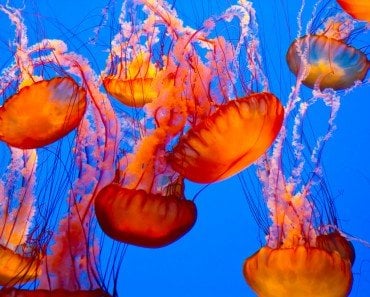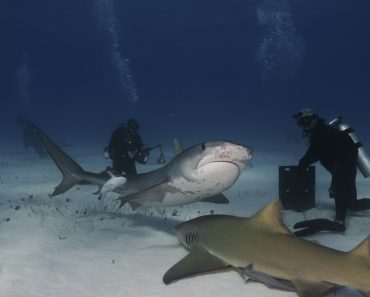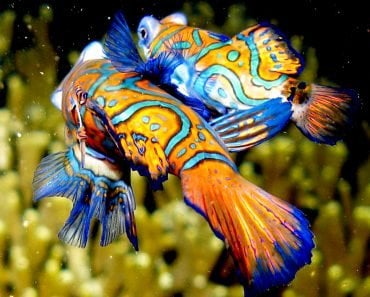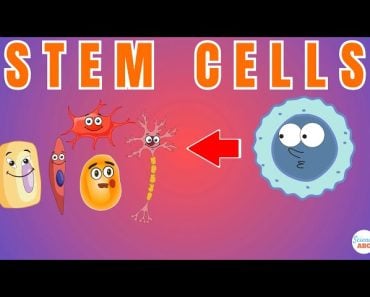Table of Contents (click to expand)
Turritopsis Dohrnii is called the immortal jellyfish because it is the only known animal to be immortal. Whenever it is injured or dying, it can turn its cells back into young cells and start anew.
Turritopsis dohrnii is the only known animal to be immortal. Whenever it is injured or dying, it can turn its cells back into young cells and start anew.
Imagine this… You’re old, with a hunched back and greying hair. You know that your time is near. The clock is ticking and the seconds are passing, but then, suddenly, you revert back to being a baby, ready to live all over again. You’re…immortal!
Like Benjamin Button, you would grow from old to young, but in this case, you could do it at will.
This sounds like science fiction, but it actually happens to what is popularly called the immortal jellyfish! Scientifically, it is called Turritopsis dohrnii
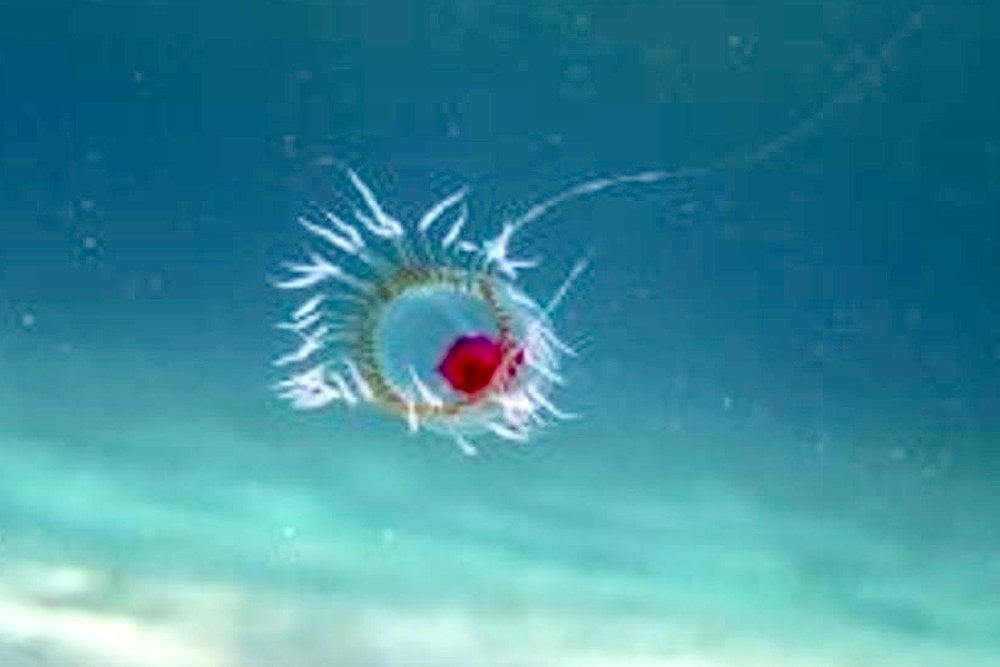
Recommended Video for you:
Turritopsis Dohrnii
Formerly known as Turritopsis nutricula, the creature capable of such an amazing feat is a very specialized jellyfish.
It belongs to the Phylum Cnidaria. Jellyfish can exist in polyp form, as medusa, or can alternate between both. T. dohrnii falls under the last category. Polyps are sessile creatures that stay attached to a substratum. They have a foot with which they attach to the substratum, and their mouth faces the water, surrounded by tentacles.
On the other hand, medusae are motile creatures that can swim about. They have a bell-shaped head with tentacles that help for swimming
As is the case with all jellyfish, they have neither a heart nor brain. They were first discovered in the Mediterranean Sea. Now they are spreading all over the world, particularly because these tiny creatures are hitchhiking on ships in their ballast water and traveling across the globe.
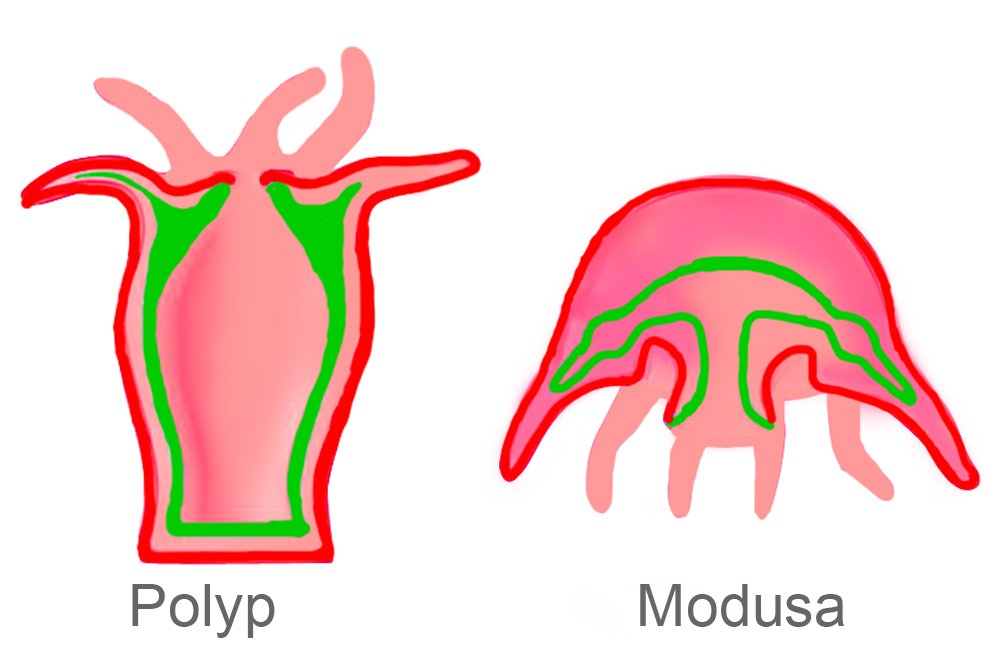
Life Cycle
T. dohrnii reproduce sexually. The males release their sperm in the water, while the females develop the eggs in their stomach in an area called the manubrium. It is assumed that fertilization takes place in the water itself, giving rise to planula, which is the larval stage. These planula then settle down on the sea bed or other suitable substratum and form colonies called polyps. These polyps reproduce asexually to form exact replicas of themselves. Eventually, from these colonies, immature medusae develop through budding. They take a few months to attain sexual maturity, and then the cycle repeats.
Immortality Through Transdifferentiation
While the life cycle of T. dohrnii moves in a set manner, these organisms have the unique ability to stop and reverse it. That’s correct. While in their medusa stage, the jellyfish can revert back to the polyp stage. They can do this not just while they are immature medusae, but even after they have attained sexual maturity!
They achieve this through a process called transdifferentiation. This is the ability of a mature cell to transform into another type of mature cell. This process requires the cells from the bell and the cells of the circulatory canal system. Therefore, an adult medusa can simply revert back to its polyp form after going through an intermediate cyst form, leaving it ready to start life all over again! This is biological immortality
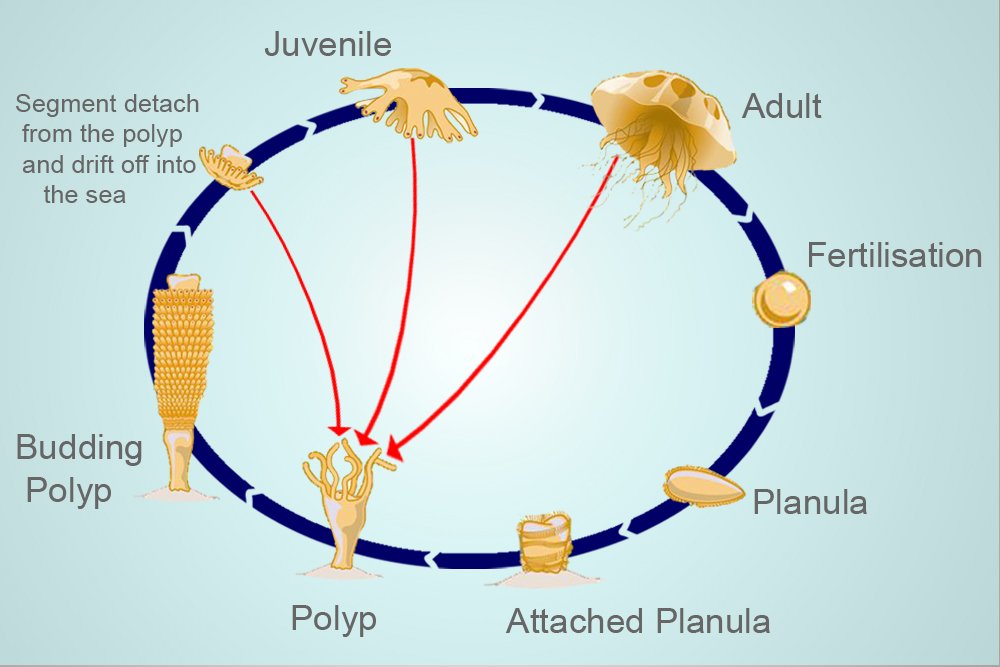
However, it’s not all that easy. This conversion comes with certain conditions too; namely, medusae cannot completely control their reversal. Whenever the medusa is injured, the external conditions are not conducive, or if it is starving, only then can it undergo this transformation. Fortunately, there is no limit as to how many times it can undergo this change.
Even so, this doesn’t mean that they can never die. They can still be eaten or die of diseases, etc.
Due to a lack of studies on these beings, it is not clear how they manage to carry out such a fascinating process. Observing this transformation in a lab is easier said than done. This is because the conditions under which they undergo their transformation process are very specific, and not fully understood by us, so extensive and enlightening research is yet to be done!

